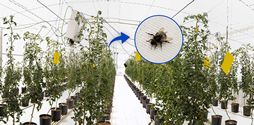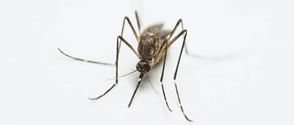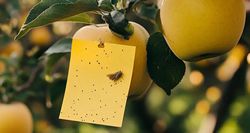Autonomous farm robots optimize pest control with electric linear actuators
Agrobot is actively developing other iterations of the Bug Vacuum, including even larger footprints. As the company extends its solutions to new axes of motion, Thomson engineers and BIBUS Spain, S.L., will be working with them to meet any actuator challenges that emerge.
Overcoming Damage With Data | Why Agricultural Monitoring Matters Even More Now
In modern farming reality, fast and accurate agricultural monitoring is indispensable. Operating without comprehensive real-time monitoring is essentially trying to farm blindfolded, making it akin to guessing rather than deciding.
Using nanotechnology to target crop-munching pests
Current approach to pesticides kills beneficial bugs such as pollinators and predatory insects that help maintain healthy ecosystem.
Termites | What You Should Know About the Silent Saboteurs of Soil and Structure
Farmers cultivating sugarcane, maize, rice, wheat, groundnuts, and various fruit trees must remain vigilant. Termites can damage crops by attacking roots and stems, tunneling through plant tissues, weakening the plant's structure, and impeding vital water and nutrient flow.
DARkWIN Project: Nature and technology together to improve the agriculture of the future
Novagric is collaborating in an innovative research project aimed at developing more climate-resistant crops through natural plant selection.
Not Your Average Ag Pest, Why Mosquitoes Deserve a Spot on the Radar
With the 2025 mosquito season upon us, we believe it's important to spotlight the risks these pests pose to human health and overall agricultural productivity. Their expanding habitat range, driven largely in part by climate change, makes it clear: awareness is critical.
Stuck in the Past | Why Farmers Are Replacing Sticky Traps with Real-Time Insect Monitoring
While sticky traps have served their purpose over the years, they come with significant drawbacks. These old school monitoring tools demand regular attention and manual data collection - which is time-consuming and labor-intensive.
Understanding The Hidden Costs of the Olive Fruit Fly in Commercial Groves
Beyond the economic toll, the olive fruit fly poses a quality issue. Infested olives can increase acidity levels in olive oil, degrading its flavor and market value. For table olives, visible damage renders the fruit unfit for sale, further compounding growers' losses.
Uninvited Guests | How the Codling Moth Impacts Commercial Agriculture
When these pests take up residence in an orchard, they don't just nibble; they stage a full-scale invasion, leaving farmers scrambling to protect their harvest.
Tiny Pest, Big Problem | Managing the Diamondback Moth in Agriculture
In this article, we will explore the ongoing threat of diamondback moths, shedding light on their economic impact and discussing effective, sustainable methods for monitoring for and reducing infestations.
Purigo - Unmanned Orchard Spraying Robot
Hada Co., Ltd.'s 'The Purigo Orchard Spraying Robot' is a revolutionary product that has redefined the conventional 500-liter engine-powered sprayers that have seen no technological advancements for 20 years.
Guarding Your Grove: Understanding Almond Pest Monitoring
One of the most persistent threats to almond production is the presence of insect pests. These unwelcome visitors can cause significant damage, reducing yields and impacting the quality of the almonds.
Understanding the Significance of Agricultural Insect Management
The battle against these crop-destroying pests is relentless and proper management requires the knowledge of entomologists, pest control advisors (PCAs), and crop advisors to provide accurate and actionable data.
Records 1 to 13 of 13
Featured Product

New XP-G3 Far Red LEDs Boost Horticulture Performance
Cree LED has introduced its new XLamp® XP-G3 Far Red LEDs, delivering 21% higher efficiency than the previous XP-E2 generation and built with S Line technology for superior sulfur and corrosion resistance in demanding horticulture environments. Available in three optical profiles - standard dome, Horizon70 and Horizon90 - the XP-G3 Far Red offers enhanced light uniformity, flexible beam shaping and seamless drop-in upgrades with its familiar 3.45 mm XP footprint.













